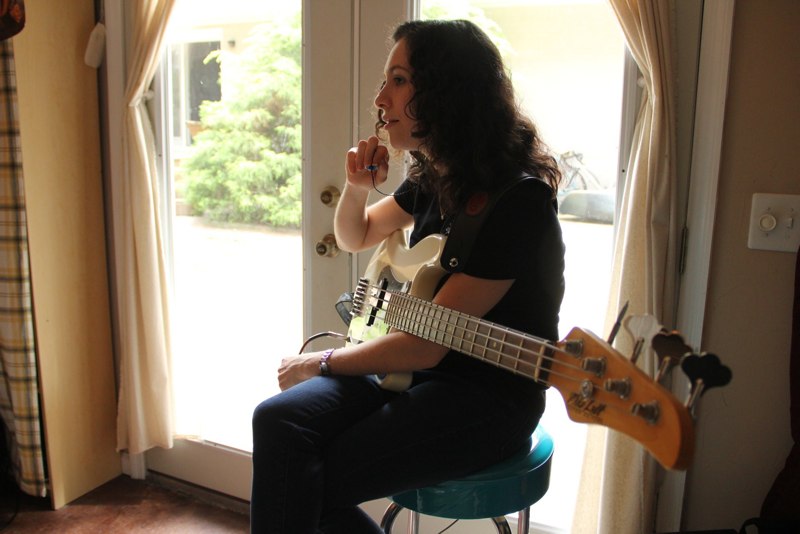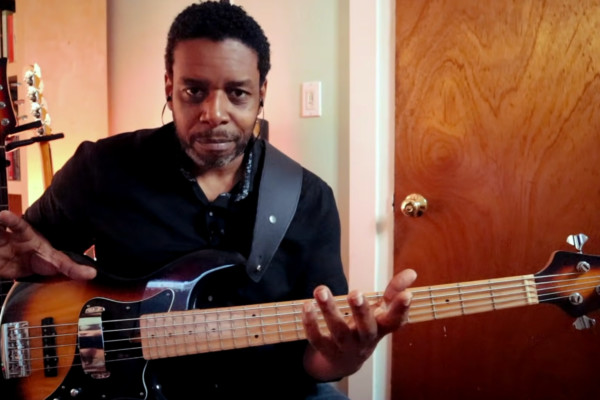The Lightbulb Moment: In Sync

Nothing tears up my heart more than the moment I realize an obvious flaw or inconsistency in my playing. I mean, what have these ten-thousand-plus hours amounted to anyway? If you’re the kind of person who strives for precision—clean playing, the perfect execution of a favorite bass line, or the ability to effortlessly play a musical idea—then you probably spend a decent amount of time in the woodshed and are willing to engage in self-critique. You record yourself and listen back, you seek out videos of your performance, and you try to hone in on what trips you up as a player. You may realize that your technique doesn’t quite cut it, your timing could use some work, and your attention to detail could be a bit more, well, attentive. If your find yourself in this scenario, I suggest you take a moment to focus on one particularly important notion: the syncing up of your fretting and plucking hand. Hello, wood shed. Bye Bye Bye fumbling fingers.
This concept can often go by the wayside, as most of us who have been playing for a significant period of time have naturally come to execute bass lines well enough. However, when it comes to doing maintenance work, I think that most people tend to place greater focus on their fretting hand rather than their plucking hand. Unless you’re playing something particularly vivace, it’s easy to overlook a slight rhythmic hiccup as compared to an incorrect note. This rhythmic inconsistency can be attributed to our fretting hand, but, assuming we are fairly agile, the timing issue may have more to do with the syncing of the hands rather than their individual dexterity. That said, the key to improving your overall execution comes from working through exercises that specifically target the relationship between the hands. Lucky for us, most exercises (such as scales) can serve this purpose with the appropriate attention to detail and a bit of alteration.
Sometimes, the best thing you can do is take a technique exercise that you already play but alter it in a way that emphasizes both hands. For instance, if you play a standard C-Major scale, try playing it in thirds (1-3, 2-4, 3-5, etc.) so that both hands are forced to change strings together and more frequently. Then play with two or three attacks per note, further engaging your plucking fingers.
If you’re practicing a chromatic exercise, a great way to change up the routine is to play a succession of three notes (G-G#-A) as triplets and move it across all strings. Play the pattern two distinct ways by changing the fingers used on your fretting hand (index, middle, ring, and then middle, ring, pinky). You can also play this pattern descending. With this in mind, make sure you are also alternating fingers on your plucking hand—triplet patters are great ways to practice cross-string movement. The goal is to exercise both hands together, so that even if you’re playing a quick phrase, your hands are in sync. You should be able to alternate plucking fingers with the same kind of dexterity your right hand enjoys and, most importantly, do both of those things fluidly and together. Make sure you practice with a metronome and start with a particularly slow (and boring) tempo so that you can build muscle memory as the tempo increases.
While this may seem like a rudimentary or not-so-exciting approach to practicing, it’s amazing how your chops can change over time and how much maintenance is necessary to stay in shape. Since the difference between having a musical idea and being able to execute the idea is having the technical facility to do so, working out each hand is as important as how well they are able to work together. Whether you’re playing a quick, perfectly clean line or a long, sonorous note that releases at exactly the right moment, your attention to detail and maturity as a player will be reflected in the precision of your execution.
Ryan Madora is a professional bass player, author, and educator living in Nashville, TN. In addition to touring and session work, she teaches private lessons and masterclasses to students of all levels. Visit her website to learn more!



